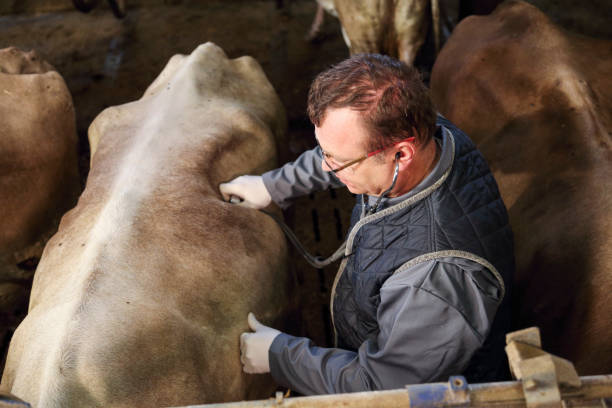Artificial insemination, also known as artificial insemination by donor (AID), has revolutionized the field of reproductive medicine since it was first successfully used in humans in the year 1884. It is a medical procedure where sperm from the male is placed directly into the female’s uterus or cervical canal through a small catheter, instead of having sexual intercourse. This technology has helped many couples struggling with infertility issues to conceive a child through the donor sperm when natural conception is not possible. In this article, we will explore the various aspects and developments in the field of artificial insemination.
Different Types of Artificial Insemination
There are mainly two types of artificial insemination- artificial insemination by husband/partner (AIH) and artificial insemination by donor (AID). In AIH, sperm from the male partner or husband of the female is used for insemination. This is generally recommended when the male partner has low sperm count or poor sperm motility but his sperm can still fertilize an egg. In AID, donor sperm from a bank is used which is anonymously donated by healthy men. This is used when the male partner is unable to provide sperm due to medical conditions like azoospermia or after vasectomy. Lesbian couples also opt for AID to conceive.
Success Rates of Artificial Insemination
Several factors affect the success rates of artificial insemination which usually range from 15-25% per cycle. Younger age of female, fewer fertility issues, higher number of motile sperm inseminated, and insemination close to ovulation increase the chances of conception. On an average, the cumulative success rate after 6 cycles is about 60-70%. With the help of fertility drugs, the pregnancy rate can be further improved per cycle. Since the first birth through artificial insemination in the year 1884, more than 5 million children worldwide are estimated to be conceived through this technique making it a huge success in the field of reproductive medicine.
Evolving Methods and Technologies
Over the years, the methods and technologies associated with artificial insemination have also evolved greatly. In the past, a syringe was used to deposit raw semen specimens close to the cervix. Now, specialized catheter systems are used to deposit processed and prepared sperm samples directly into the uterus or fallopian tubes through minor surgical procedures under ultrasound guidance. Intracytoplasmic sperm injection (ICSI) where a single sperm is injected directly into the egg is also often used along with in vitro fertilization (IVF) to increase the chances of fertilization when sperm count or quality is very low. The introduction of cryopreservation techniques has allowed sperm, eggs, and embryos to be safely frozen and stored for future use through sperm banking which has offered hope to many couples.
Ethical and Legal Considerations
While artificial insemination has helped many families, it also brings up certain ethical and legal considerations that need to be addressed. Anonymous sperm donation raises issues about lack of medical history and rights of the donor-conceived individuals later in life. Some countries and states have laws mandating donor identity being disclosed to the offspring on reaching adulthood. Surrogacy involving donated eggs and artificial insemination also involves complex legal contracts and parental rights that vary greatly by jurisdiction. LGBTQ families also face legal hurdles largely dependent on the policies of individual states or countries. Overall, as the technology progresses rapidly, close monitoring and clear legal frameworks are required to optimize benefit while minimizing ethical conflicts.
Impact on Society
The cultural impact of artificial insemination on modern societies worldwide has been immense. It has redefined traditional family structures by allowing same-sex couples, single parents by choice and post-menopausal women to experience parenthood. It is slowly normalizing alternative family forms and bending social taboos. It is allowing genetic inheritance from ancestors through sperm cryopreservation even after death for healthcare workers in high-risk environments. The booming fertility tourism industry catering to reproductive needs across international borders also highlights its persuasive influence. However, it has also increased public anxieties around issues like ‘designer babies’, commodification of human gametes, and questions if natural processes are being outpaced by technology. More open public discourse is required to shape policies addressing these societal implications.
Future Prospects
With ongoing research in stem cells and regenerative medicine, experts believe artificial gametes may be created from adult somatic cells in the future, further expanding reproductive options. The development of lab-grown sperm, eggs and embryos may help individuals with genetic conditions to have biological children free from inherited diseases. 3-parent babies using mitochondrial donation are already a reality, blurring lines between natural and assisted reproduction. As we move towards an era of enhanced human reproduction blending medicine, genetics and technology, artificial insemination will likely remain integral yet continually evolve. Strict regulation will still be essential to maximize benefits of such advancements responsibly in a socially accountable manner.
Artificial insemination has revolutionized human reproduction opening possibilities once considered impossible. From its humble beginnings, it has grown tremendously in scope and sophistication. While raising complex debates, for millions of families struggling with infertility worldwide, it has offered hope to build their families. As technology progresses, a delicate balance needs to be maintained between innovation, ethics, law and social sensibilities to ensure this important field continues to blossom positively.
*Note:
1. Source: Coherent Market Insights, Public sources, Desk research
2. We have leveraged AI tools to mine information and compile it

